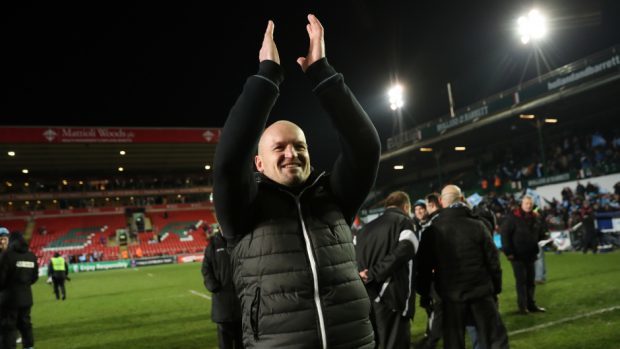Scotland haven’t exactly flourished on their rugby trips to Paris.
On the contrary, a record of just three wins in the last 50 years – in 1969, 1995 and 1999 – highlights how Les Bleus have traditionally held the whip hand at home in this fixture and brandished it with the swagger of the Marquis de Sade.
And yet, Gregor Townsend’s side have a fantastic opportunity to record their maiden victory of the 21st century in the French capital when they continue their Six Nations campaign on Saturday.
Indeed, they need look no further than Townsend himself, who was involved in two of the aforementioned contests and helped spark mayhem for the Scots.
It was his inimitable “Toony flip” to Gavin Hastings which allowed the latter to run under the posts for a try in the final moment of the pulsating 1995 tussle.
But even that mercurial magic was overshadowed by the pyrotechnics which were unleashed on the French four years later on an April afternoon.
It was the penultimate Five Nations Championship, prior to the arrival of Italy in the tournament. And there weren’t many reasons to be cheerful for those of us at the Stade de France just before and after the kick-off in glorious sunshine.
The police band managed to massacre “Flower of Scotland”. Then Thomas Castaignede produced a mesmerising break to score a try in the first minute of the match.
At that point, the visitors could have been forgiven for fearing the worst. But instead, they surged back into the fray, seized the proceedings by the scruff of the neck and served up a thrilling exhibition of sparkling rugby from the champagne cellar.
Townsend was in the thick of it, weaving and wending his way past opponents and leaving them bewitched, bothered and bewildered.
So was Alan Tait, the former RL star with a tough-as-teak mentality, and Gary Armstrong, who skippered the side as if his life depended on it.
Remarkably, after conceding that early Castaignede try, Scotland crossed the French line no less than five times in the next 26 minutes.
With the forwards supplying a steady stream of quality possession, their exciting back line clicked into gear, and Townsend was to the fore.
As head coach, Jim Telfer, enthused: “It was as if every time we had the ball, we scored a try. For a while, it was like the other team wasn’t even on the park.”
Tait, all purpose, poise and penetration, notched two of the touchdowns, while Martin Leslie, at his ruthless best, followed suit with a brace.
There was another for Townsend and the stadium fell silent – apart from the Scottish contingent, who could scarcely believe what they were watching.
As Armstrong later recalled: “We wanted to play a wide game, the sort of game that they had used against us to such good effect the previous year.
“And it worked, it worked beautifully. We cut through them like a knife through butter.”
The Scots eventually ran out 36-22 winners, and even though there were only three points in the second half – a Kenny Logan penalty – none of us were complaining. I met the late, great Bill McLaren at the airport and he positively purred.
“That was wonderful, son, wasn’t it,” he marvelled. And it proved the catalyst for Scotland to lift the last Five Nations trophy when Wales beat England 24 hours later.
Now, 20 years on, the positions of the two sides are fairly similar. Townsend has brought back a Border terrier of a scrum-half in Greig Laidlaw, who will snipe away at the French like Armstrong.
And the Scots have plenty of flair and firepower in their back line and the ability to perform at pace when the gears click into place.
As the French demonstrated during their capitulation to England last weekend, they are nothing special, with little of their former powers of spontaneity or sleight of hand.
They still possess some gifted personnel – how could it be otherwise – but, under Jacques Brunel’s stewardship, they are ponderous and one-dimensional and look incapable of creating much beyond occasional individual brilliance.
In which light, if Townsend can remind his men of what happened in 1999, there is no reason why players in the mould of Peter Horne, Tommy Seymour, Sam Johnson, Jamie Ritchie and Jonny Gray can’t deliver an encore!
